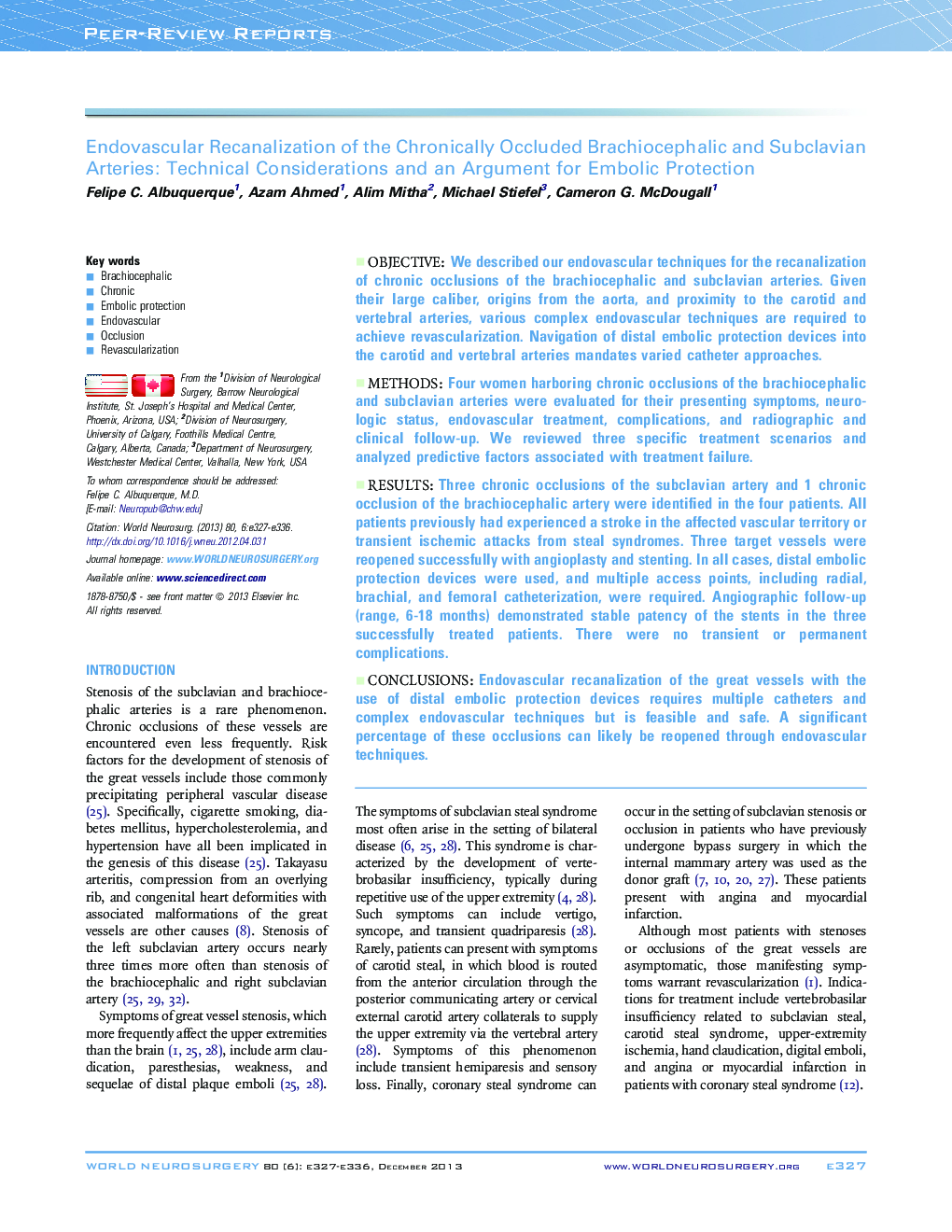| کد مقاله | کد نشریه | سال انتشار | مقاله انگلیسی | نسخه تمام متن |
|---|---|---|---|---|
| 3095852 | 1581475 | 2013 | 10 صفحه PDF | دانلود رایگان |

ObjectiveWe described our endovascular techniques for the recanalization of chronic occlusions of the brachiocephalic and subclavian arteries. Given their large caliber, origins from the aorta, and proximity to the carotid and vertebral arteries, various complex endovascular techniques are required to achieve revascularization. Navigation of distal embolic protection devices into the carotid and vertebral arteries mandates varied catheter approaches.MethodsFour women harboring chronic occlusions of the brachiocephalic and subclavian arteries were evaluated for their presenting symptoms, neurologic status, endovascular treatment, complications, and radiographic and clinical follow-up. We reviewed three specific treatment scenarios and analyzed predictive factors associated with treatment failure.ResultsThree chronic occlusions of the subclavian artery and 1 chronic occlusion of the brachiocephalic artery were identified in the four patients. All patients previously had experienced a stroke in the affected vascular territory or transient ischemic attacks from steal syndromes. Three target vessels were reopened successfully with angioplasty and stenting. In all cases, distal embolic protection devices were used, and multiple access points, including radial, brachial, and femoral catheterization, were required. Angiographic follow-up (range, 6-18 months) demonstrated stable patency of the stents in the three successfully treated patients. There were no transient or permanent complications.ConclusionsEndovascular recanalization of the great vessels with the use of distal embolic protection devices requires multiple catheters and complex endovascular techniques but is feasible and safe. A significant percentage of these occlusions can likely be reopened through endovascular techniques.
Journal: World Neurosurgery - Volume 80, Issue 6, December 2013, Pages e327–e336